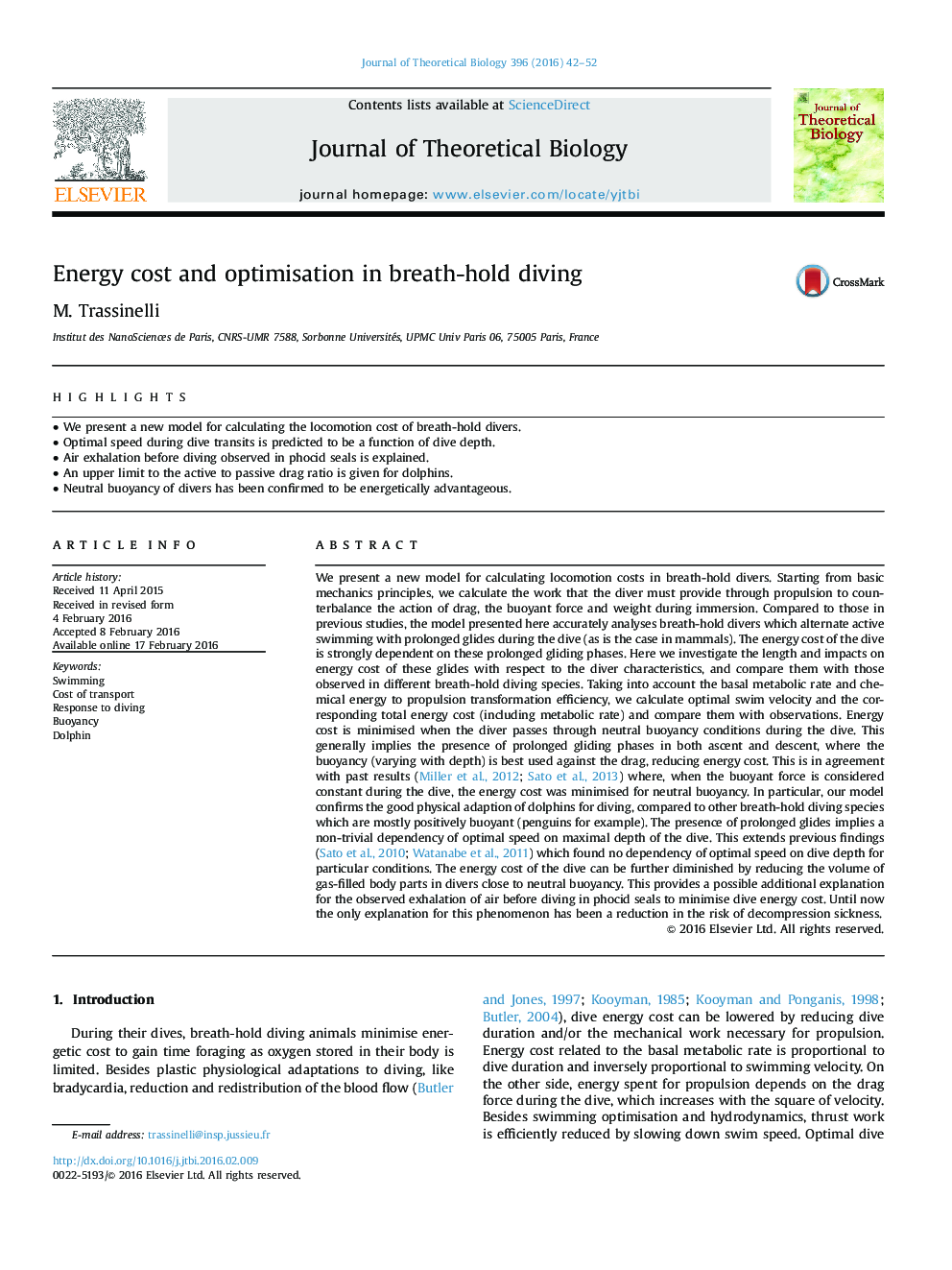| کد مقاله | کد نشریه | سال انتشار | مقاله انگلیسی | نسخه تمام متن |
|---|---|---|---|---|
| 6369290 | 1623814 | 2016 | 11 صفحه PDF | دانلود رایگان |
عنوان انگلیسی مقاله ISI
Energy cost and optimisation in breath-hold diving
ترجمه فارسی عنوان
هزینه انرژی و بهینه سازی در غواصی نفس
دانلود مقاله + سفارش ترجمه
دانلود مقاله ISI انگلیسی
رایگان برای ایرانیان
کلمات کلیدی
شنا کردن، هزینه حمل و نقل، پاسخ به غواصی، شناوری، دلفین،
موضوعات مرتبط
علوم زیستی و بیوفناوری
علوم کشاورزی و بیولوژیک
علوم کشاورزی و بیولوژیک (عمومی)
چکیده انگلیسی
We present a new model for calculating locomotion costs in breath-hold divers. Starting from basic mechanics principles, we calculate the work that the diver must provide through propulsion to counterbalance the action of drag, the buoyant force and weight during immersion. Compared to those in previous studies, the model presented here accurately analyses breath-hold divers which alternate active swimming with prolonged glides during the dive (as is the case in mammals). The energy cost of the dive is strongly dependent on these prolonged gliding phases. Here we investigate the length and impacts on energy cost of these glides with respect to the diver characteristics, and compare them with those observed in different breath-hold diving species. Taking into account the basal metabolic rate and chemical energy to propulsion transformation efficiency, we calculate optimal swim velocity and the corresponding total energy cost (including metabolic rate) and compare them with observations. Energy cost is minimised when the diver passes through neutral buoyancy conditions during the dive. This generally implies the presence of prolonged gliding phases in both ascent and descent, where the buoyancy (varying with depth) is best used against the drag, reducing energy cost. This is in agreement with past results (Miller et al., 2012; Sato et al., 2013) where, when the buoyant force is considered constant during the dive, the energy cost was minimised for neutral buoyancy. In particular, our model confirms the good physical adaption of dolphins for diving, compared to other breath-hold diving species which are mostly positively buoyant (penguins for example). The presence of prolonged glides implies a non-trivial dependency of optimal speed on maximal depth of the dive. This extends previous findings (Sato et al., 2010; Watanabe et al., 2011) which found no dependency of optimal speed on dive depth for particular conditions. The energy cost of the dive can be further diminished by reducing the volume of gas-filled body parts in divers close to neutral buoyancy. This provides a possible additional explanation for the observed exhalation of air before diving in phocid seals to minimise dive energy cost. Until now the only explanation for this phenomenon has been a reduction in the risk of decompression sickness.
ناشر
Database: Elsevier - ScienceDirect (ساینس دایرکت)
Journal: Journal of Theoretical Biology - Volume 396, 7 May 2016, Pages 42-52
Journal: Journal of Theoretical Biology - Volume 396, 7 May 2016, Pages 42-52
نویسندگان
M. Trassinelli,
